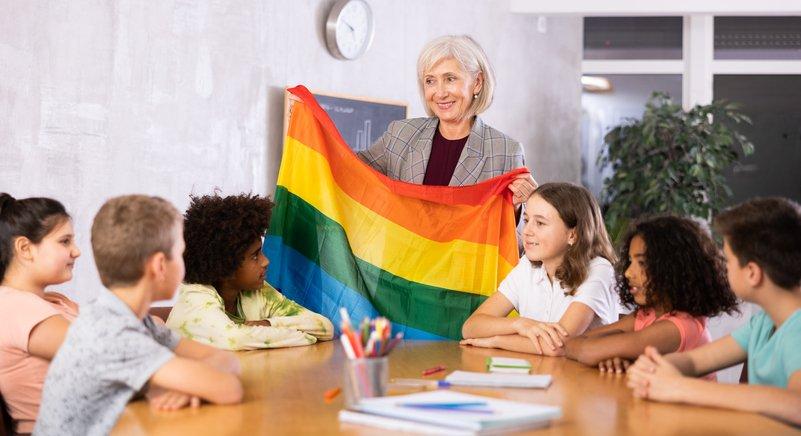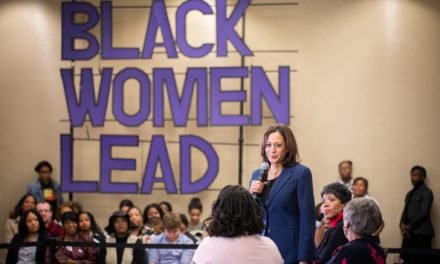
No. It’s a small word with a lot of clout.
And despite 110 languages containing this tiny word, its universal meaning causes a range of emotions no matter who you are or where you’re from. You can be a preschooler in Chicago, or a centenarian in Chile, and when you hear or say that two-letter word, it can cause fear, joy, resentment, and everything in between.
Any schoolteacher can tell you that on any given day, that word is thrown around hundreds of times in class, at recess, during lunch, and after school. With educators, students, and parents saying no in every scenario imaginable, the resulting dramas — big and small — get played out in hurt feelings, happy outcomes, or business as usual.
No. It’s our superpower, packed into a single syllable.
And that’s why I’m writing about the power of saying no: to remind educators in places like Texas, South Carolina, Arizona, and my home state of Florida — places where racist and homophobic legislation has invaded our schools and classrooms, harming our students and communities.
I’m writing to remind fellow educators about the importance of addressing these difficult topics, the power of refusing these discriminatory policies, and how doing so can make a huge difference.
Now is not the time to stay silent and go along to get along. Our students are confused. Now is not the time to let someone else speak on these controversial topics. Our kids need us. Now is not the time to leave it in the hands of scared, uneducated, and biased parents and “parents’ rights” groups. Now’s the time for us to teach facts and stand for what’s right. As educators, we have a responsibility.
And we can’t waste any more time staying silent, being afraid, or waiting for someone else to stand up for our students, their families and our communities. Especially when extremist conservative politicians, anti-LGBTQ+ organizations, and racist advocacy groups work overtime.
According to the American Civil Liberties Union, there are more than 490 anti-LGBTQ+ bills in 2023 legislation sessions across the country. And currently, there are at least 44 states restricting education on racism, sexism, and/or the contributions of specific racial or ethnic groups to U.S. history, according to Education Week. Compare that to the four states (that’s right four: Connecticut, Delaware, Maine, and Rhode Island) who, partly in response to the murder of George Floyd, passed laws requiring instruction on Black History, according to a database maintained by the Education Commission of the States.
Right here in Florida, Gov. Ron DeSantis has waged a culture war in the name of protecting conservative values and parental rights, spearheading the passages of The Stop WOKE Act, which bans government agencies including schools from promoting certain concepts related to race and sex, including the idea that the United States and Florida are fundamentally racist or sexist, as well as the “Don’t Say Gay” Bill, which prohibits the teaching of LGBTQ+ topics in public schools.
It’s crucial that teachers stand up to these types of racist and homophobic legislation because we have a significant impact on the lives of our students. As educators, we have a responsibility to create a safe and inclusive environment for all our students, regardless of race, gender, or any other characteristic. By speaking out against discriminatory laws, teachers send a message to their students that they are valued and respected — that they matter.
And you don’t have to take a historical deep dive to find examples of teachers taking a stand. One celebrated example is the case of Brown v. Board of Education, where a group of teachers, parents, and students challenged the segregation of public schools in the United States. Their efforts led to the landmark Supreme Court decision in 1954 that declared segregation unconstitutional.
In the 1970s, a group of teachers in New York City formed the Gay Teachers Association to fight for their rights as openly gay educators. Their activism paved the way for greater acceptance and inclusion of LGBTQ+ people in schools and society as a whole.
More recently, educators in several states have spoken out against legislation that limits the teaching of critical race theory or bans transgender students from participating in sports or accessing gender-affirming healthcare. These teachers have argued that such legislation is harmful to their students and undermines their ability to provide an inclusive education.
Overall, teachers and educators have a unique opportunity and responsibility to stand up for their students and promote social justice in their communities. By speaking out and taking action, we teachers can help create a more just and equitable society for everyone.
We all know what the alternative brings, we’ve seen that movie before. It’s the one many of us are living in right now, especially in Florida.
The consequences of staying silent under these unjust education mandates in the Sunshine State has been increased racist rhetoric and homophobic attitudes by Trump-loving MAGA supporters and white supremacist groups, like the Proud Boys. Staying quiet sends a message that it’s acceptable, and that it’s OK to target these vulnerable students and communities.
The impact on Black students and students of color, as well as students who identify at LGBTQ+ has been stressful and traumatic. And some teachers, like myself, refuse to stay silent and watch them be harmed in this way.
Some of you may be asking yourself: What can I do? I’m just one person, how can I make a difference? Fair enough.
But you have more power than you think. And if you’re white and a woman who teaches, you also have more privilege (The latest demographics from Zippia.com shows that nearly 70 percent of teachers in America are white, and nearly 75 percent are women). You leveraging that power and that privilege to say no helps create change in two ways.
First, refusing to comply with these blatant discriminatory policies, or challenging them publicly inspires others to do the same. Second, it brings attention to the issue, which can lead to policy changes.
But wait, you’re probably thinking: I don’t want to be perceived as difficult, or I’m scared of being ostracized by my colleagues, friends and family. Or worse, I could upset my boss and maybe lose my leadership role or my job.
Sure, all those things could happen. It’s human nature to want to be liked. Maybe you’re not at a point where you’re ready to examine your own beliefs, biases, and privilege. Maybe your bills and mortgage won’t allow you to stand up and do what’s right.
No one said saying no would be easy, or that doing the right thing doesn’t come with some sacrifice. Whatever you decide, it’s your choice and only you have to live with that decision.
Unless you’re a teacher.
Because when you choose to be a teacher you’re not only choosing to inspire and motivate children to become better readers, problem solvers, and critical thinkers. As a teacher, you’ve chosen to help them become better human beings: kind, empathic, collaborative, respectful of people and their differences. See the irony?
Yes, saying no can be uncomfortable and risky, but it’s necessary for creating a more equitable and just world. And teachers are perfect for facilitating those ideas. We do it everyday in classrooms across the country, without thinking about it. The only difference is that by standing up against racism and anti-LGBTQ+ legislation, educators can help create a better future for all students.
And if you’re an educator, teacher, teaching artist, or education advocate who is still on the fence, and still doubts the power of no, I’ve left five tips that can help you get started:
- Know the issues: Before speaking out against discriminatory policies, educate yourself about them. Learn about the policies, their effects on students, and why they’re harmful. Having this knowledge will make your argument stronger and more effective.
- Make a plan: A good plan is crucial. Write down your concerns, gather evidence, and figure out what you want to say. Think about potential pushback and come up with responses. A solid plan will give you credibility and a clear path forward.
- Build support: Find others who share your concerns. Collaborate with them to create a united front against discriminatory policies. This will show that multiple people are advocating for change and will strengthen your argument.
- Communicate clearly: When expressing your concerns, be respectful and professional. Explain how discriminatory policies harm marginalized students and stress the importance of an inclusive and equitable learning environment. Highlight the educational, emotional, and social benefits of diversity and inclusion.
- Offer solutions: Don’t just criticize discriminatory policies, provide alternatives. Show evidence-based research, best practices, or successful examples from other schools. This will demonstrate that your objections come from a genuine desire to improve the educational experience for all students.



















Finding, maintaining, and building community with other people who are dealing with these same challenges has been helpful to me, too! Great article.